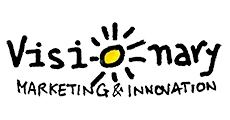ideagoras: pushing the research and development envelope

Obviously, innocentive is taking this concept one step higher by making innovation players penetrate into the world of open innovation. With systems like in innocentive and the like, innovation is no longer carried out by the sole representatives of research and development departments but is actually open to external players. In the course of this presentation, I gave examples of solved challenges at Solvay (a Belgian chemical manufacturer) and the BOGO (buy one get one) light bulb mentioned in Time magazine this month.
As I said in my presentation, I do not think that ideagoras will take the jobs of people such as those who were listening to the conference. More importantly, I think this will change the way that they work. They are increasingly challenged by their management be it at Thales or anywhere else, in order to produce better results and make innovation more directly profitable to the entire company.
Ideagoras is a step forward in the right direction. Internal ideagoras to start with are there to ensure that people are talking to one another and that they have exploited internal competencies to the full. But external ideagoras are taking things further and they come as a complement to internal r&d. I do not believe in full innovation and product development outsourcing. It would be silly as it would deprive a company of its competitive advantage and its ability to improve and evolve its product and service lines.
I believe in ideagoras coming on top of internal processes. It may even be grabbing something in the regions of 10 to 15% of current r&d budgets if all goes well. Actually, it is possible that this 10-15 % will not go to one particular ideagora, but to several of them as companies will want to spread risk across different services and different communities, and they will want to use their different business models and processes.
A spin-off of Eli Lilly, innocentive is a system of crowdsourcing, where “problems are waiting for a solution”. With innocentive, seekers are asking questions and they are waiting for solvers to post their answers to their challenges. Other business models exist such as yet2.com, which is devoted to bringing “solutions in need of a problem”. I can’t think that the two models are mutually exclusive. As a matter of fact, I think they have a lot in common, and that they could be combined for greater benefit. It seems that it is the route chosen by Procter & Gamble which seem to be clients of many an ideagora.
At the end of the day, the distinction between technologically-driven innovation (solutions in need of a problem), and business-driven innovation (problems in search of a solution) is the real gist of the problem and one which we addressed through the joint innovation programme methodology described in our White PaperThe white paper is one of the pillars of a B2B content marketing strategy. It is proof of your expertise.. It all hinges on the need to describe innovation and what it means, and the absolute necessity to define objectives, which need to be smart (specific, measurable, achievable, realistic and time-bound) objectives.
I enjoyed this presentation thoroughly, and I am looking forward to the next iteration of the technical leadership programme at Thales University.
- Multicloud Synchronisation: Onecloud, Google Cloud and others - 25/04/2024
- Perceptron: A History of Neural Networks - 22/04/2024
- Networking and Growing Your B2B Business with LinkedIn - 20/04/2024




